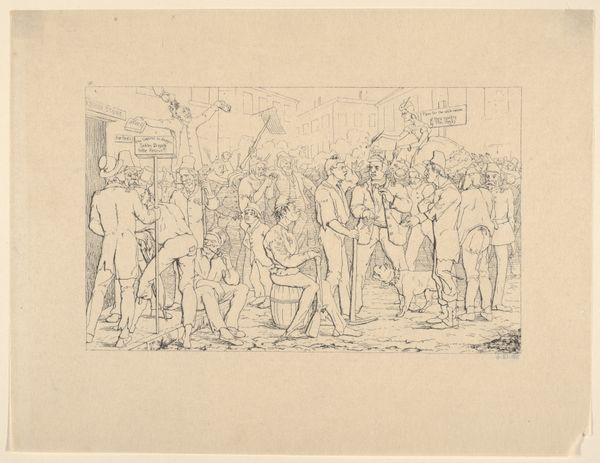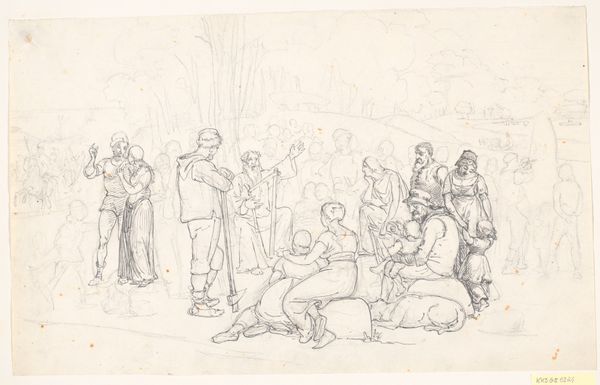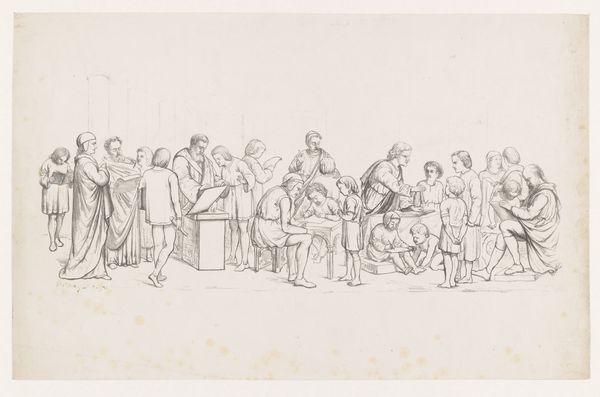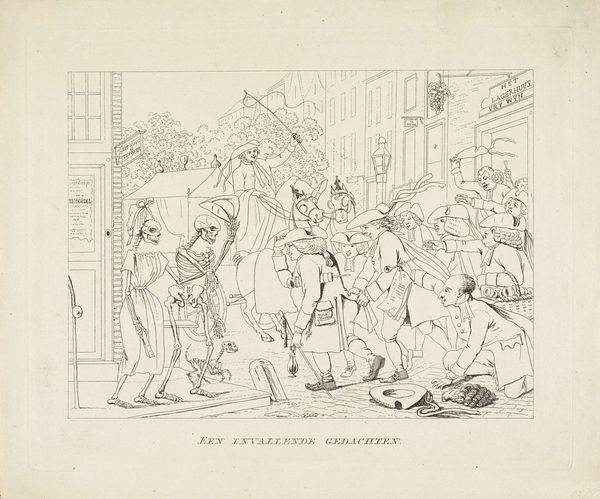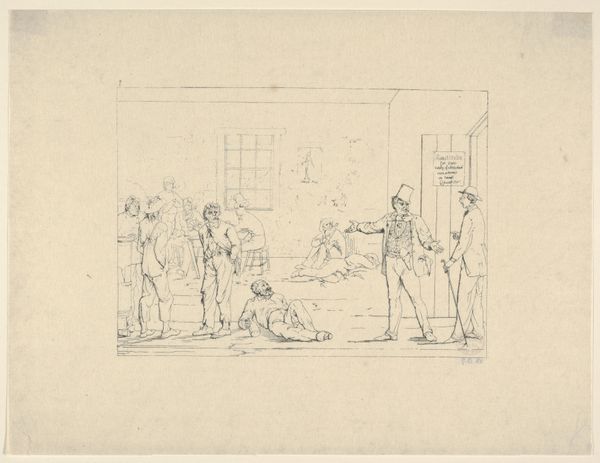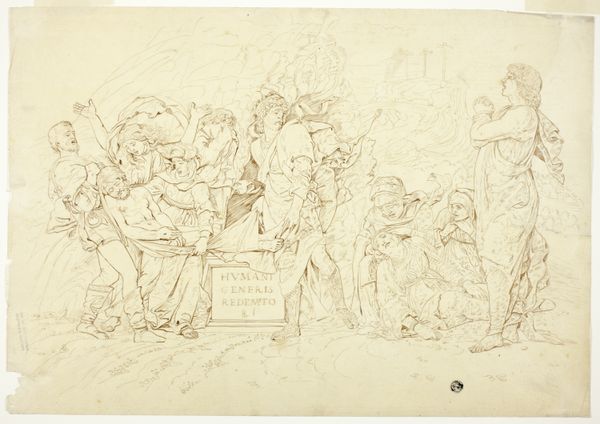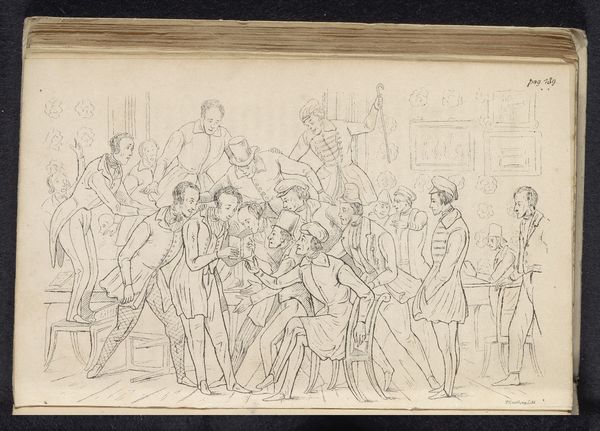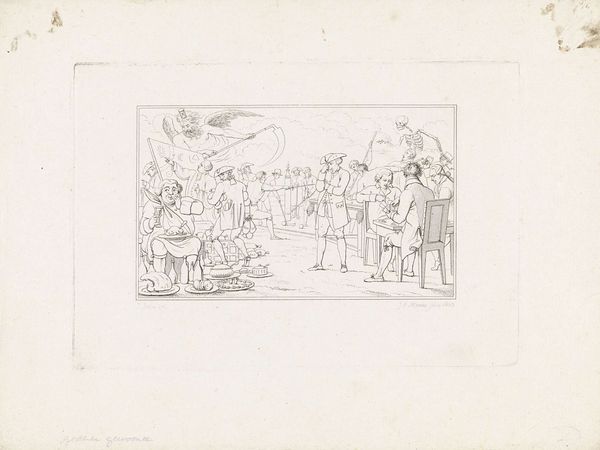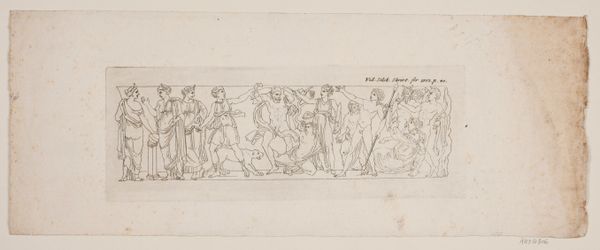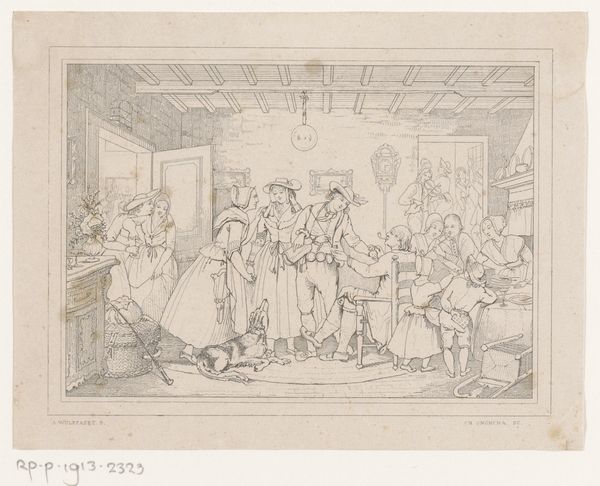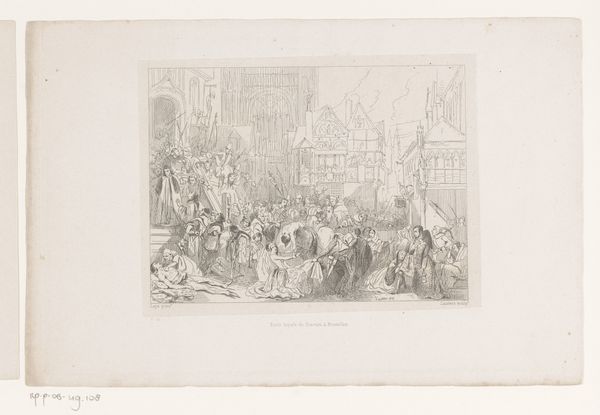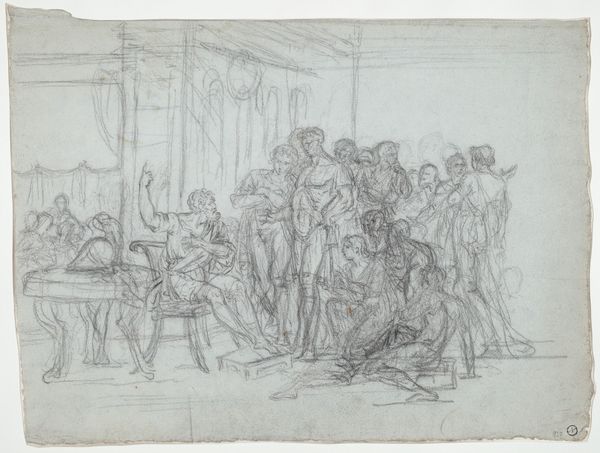
drawing, print
#
drawing
#
comic strip sketch
#
quirky sketch
# print
#
caricature
#
cartoon sketch
#
personal sketchbook
#
idea generation sketch
#
sketchwork
#
ink drawing experimentation
#
romanticism
#
sketchbook drawing
#
genre-painting
#
storyboard and sketchbook work
#
sketchbook art
Dimensions: height 206 mm, width 255 mm
Copyright: Rijks Museum: Open Domain
Curator: Editor: Here we have "Mislukte luchtreis van A. Hopman (plaat II), 1804," a print by Daniël (I) Veelwaard. It's quite chaotic, with a scene packed with figures and some sort of contraption hanging from the ceiling. It's… busy! What strikes you when you look at it? Curator: For me, the real story lies in the materiality and its production. It is not just chaotic; it's a deliberate commentary rendered through accessible, reproducible means. Consider that this print circulated during a time of intense social and technological change. Editor: How so? What do you mean by accessible and reproducible? Curator: Well, this isn't an oil painting intended for a wealthy patron. Prints allowed for mass dissemination of ideas. The "failed flight" becomes less about Hopman’s individual failure and more about critiquing the collective mania surrounding technological advancement through widely accessible, reproducible means. The materiality—the ink, the paper, the printing press—enabled social critique to reach a broad audience. Who had access to them and where might they have seen them displayed? Editor: So you’re saying the choice of print as a medium is key to understanding its message? Were prints considered "lesser" art at the time? Curator: Exactly! And the notion of 'lesser' is precisely what a materialist approach questions. The labor involved in creating these prints, the resources consumed, and their purpose as disseminators of social commentary elevate their importance. What if "high" art only served to reinforce the status quo? Doesn’t the "low" suddenly become very important? Editor: I never thought about it that way. I always focused on the content of the image. Now, looking at it, I see it's more than just the cartoonish style – it's a conscious decision to engage with a wider audience through a particular medium. Thanks, that shifts everything. Curator: Precisely. By focusing on materials and mode of production, we gain a more comprehensive understanding of the art and society, seeing this artwork not as an isolated masterpiece, but rather a reflection of technological advancement as an expression of social and material conditions of its creation and consumption.
Comments
No comments
Be the first to comment and join the conversation on the ultimate creative platform.
